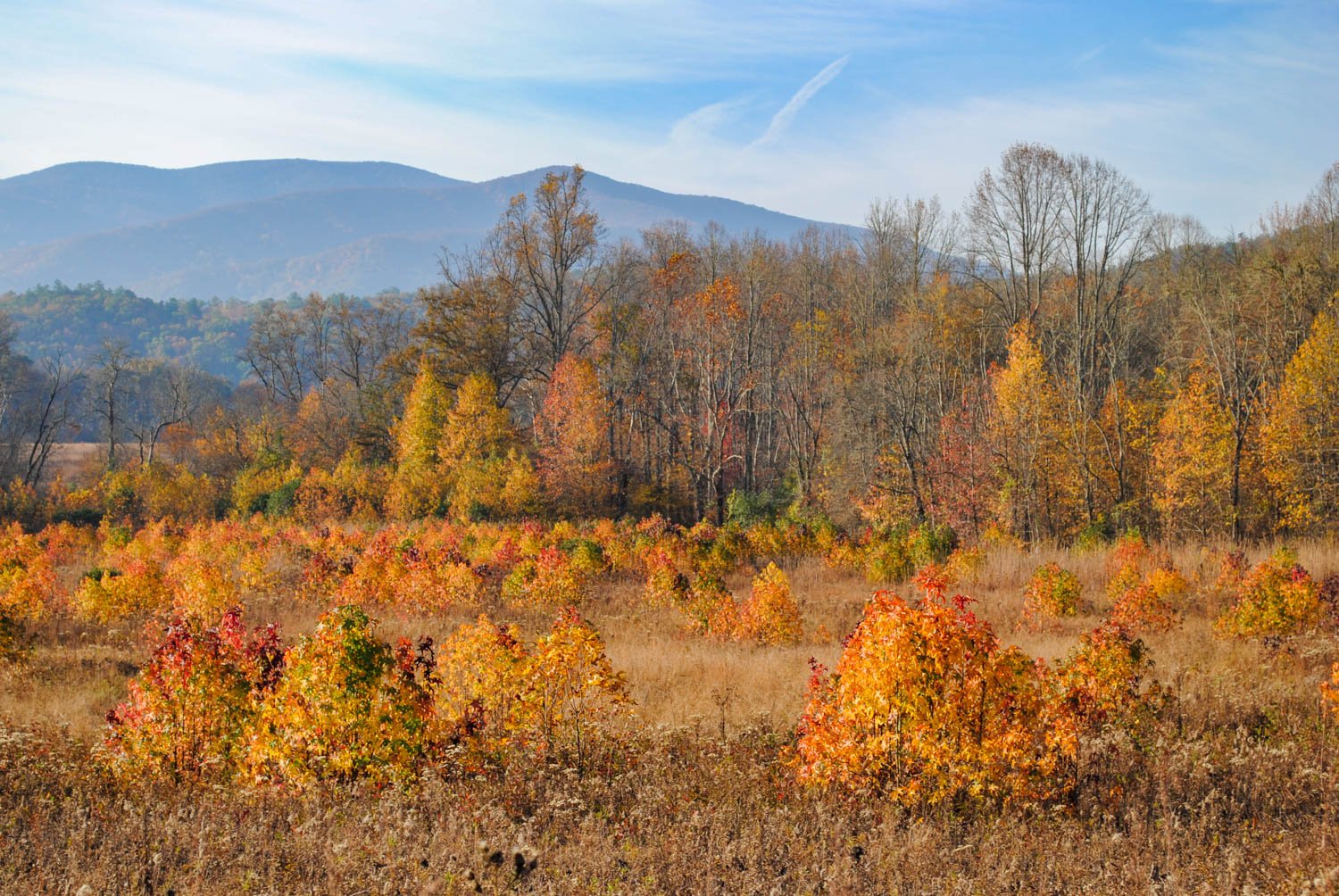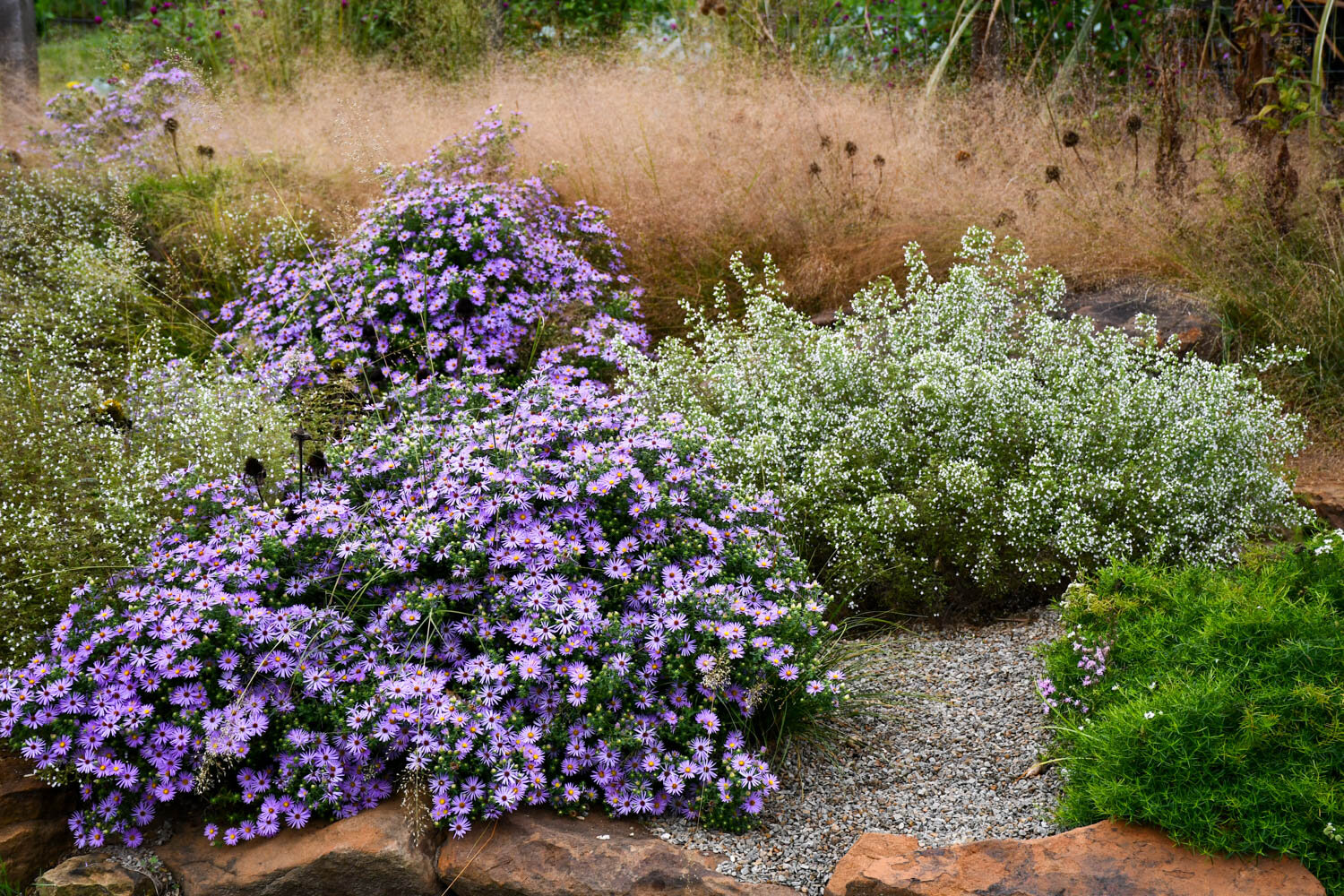Cades Cove holds a special place in my heart. Its one of my favorite places in the world. I’ve camped there, walked its streams, road through it probably around a dozen times, and I’ve stood on top of Gregory Bald and looked down into this valley. I know its curves and loops by heart.
If you haven’t heard of Cades Cove, it is an 11-mile loop in the Great Smoky Mountains National Park. Early pioneers lived here before the park was established, and there are still historical buildings on site.
My favorite time to see this valley is autumn at the end of the growing season when many of the plants are blazed with their fall glory. I have a plethora of photos I’ve taken there over the years.
There’s a lone tree I’ve always enjoyed seeing out in Cades Cove. It’s so stately.
Sourwood (Oxydendrum arboreum) is one of my favorite native trees, mainly for its wonderful red fall foliage color.
Chelone glabra (white turtlehead) grows in wet sites along streams in Cades Cove.
A sea of sea oats in a forest in Cades Cove. Chasmanthium latifolium is a wonderful native grass for shady sites, and it can sport good fall color.
An under appreciated native is Euonymus americanus. I’ve seen it grow well in Cades Cove and here in Texas. Hearts-a-bustin’ or strawberry bush has these lovely capsules in the fall, and the foliage often turns a bleached white.
Our fifth anniversary was last weekend. Karen and I spent part of our honeymoon in the Smokies, and during our stay, I wanted to go see the fall color in Cades Cove. It’s about an hour drive from Gatlinburg through the dark winding roads with the light slowly crescendoing towards dawn. I love getting to this place in the early morning when people are few and far between before the sun peaks over the mountain tops.
Skeletons of the past season stand in Cades Cove.
Fog shrouds Hyatt Lane that connects the loop through Cades Cove.
The lone tree yet again. The prior photo from above was taken 8 years before this image, and I can see some changes in its architecture. Some limbs lost and others gained.
The color was a bit past, but that’s alright. There was enough still holding on for us two leaf peepers.
A golden glow envelopes the broomsedge (Andropogon virginicus) in Cades Cove. This photo was one of my favorites from the trip.
This Acer is holding on to its last leaves.
Some snags rise out of grass and fog as beams of sunlight penetrate Cades Cove.
The shadows of Tridens flavus rise out of the grassland.
Seeing these short Liquidambar emerging out of this field made me appreciate the potential of coppicing sweet gum in a garden. Each tree has such variable color.
A pair of late milkweed follicles haven’t shed their seeds and coma yet.
I always love finding milkweed seed caught in their dispersion.
On the southern loop headed back to the entrance I spied this large Rhus colony against a backdrop of fading fall color on the mountainsides.
Sometimes when I can’t sleep at night, my mind will drift to Cades Cove. I’ll imagine myself walking through the grass under a starry, moonlit sky where I can barely see firmament torn by the mountain tops. And, there I will find rest.











































































































